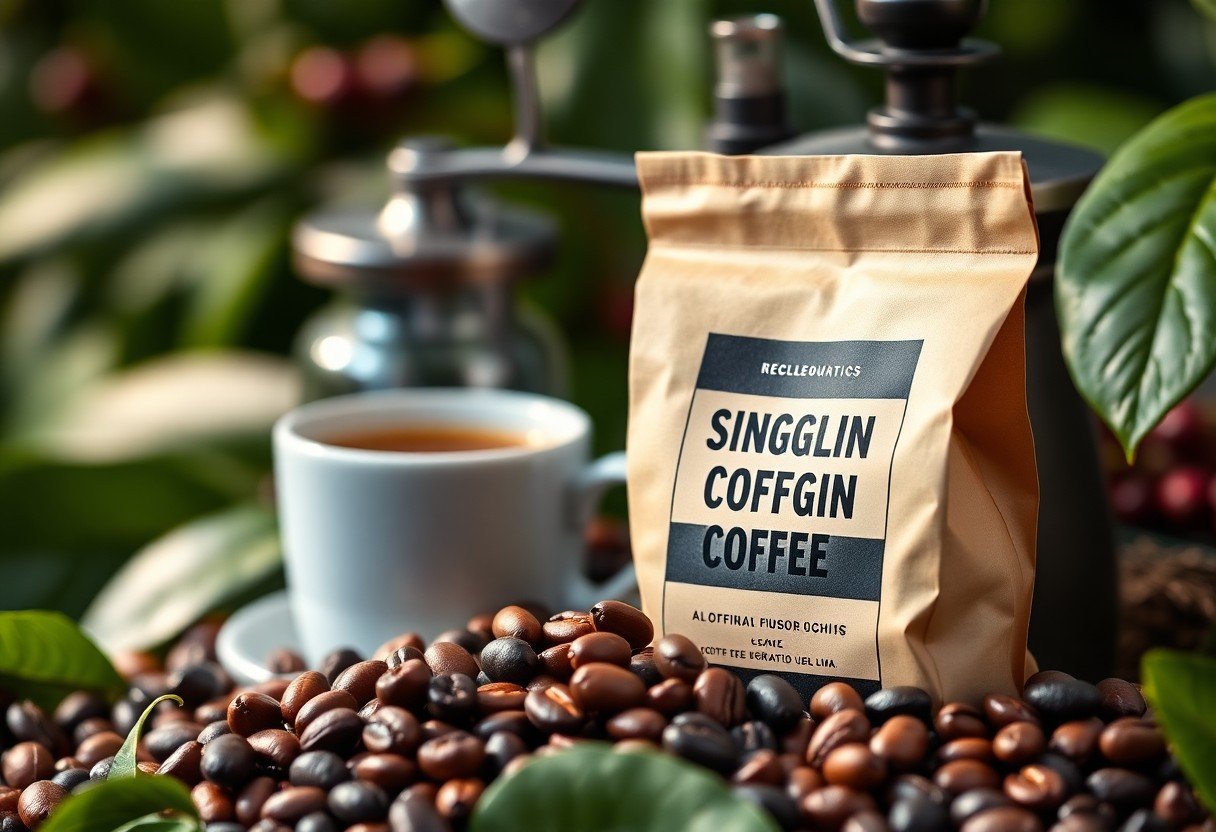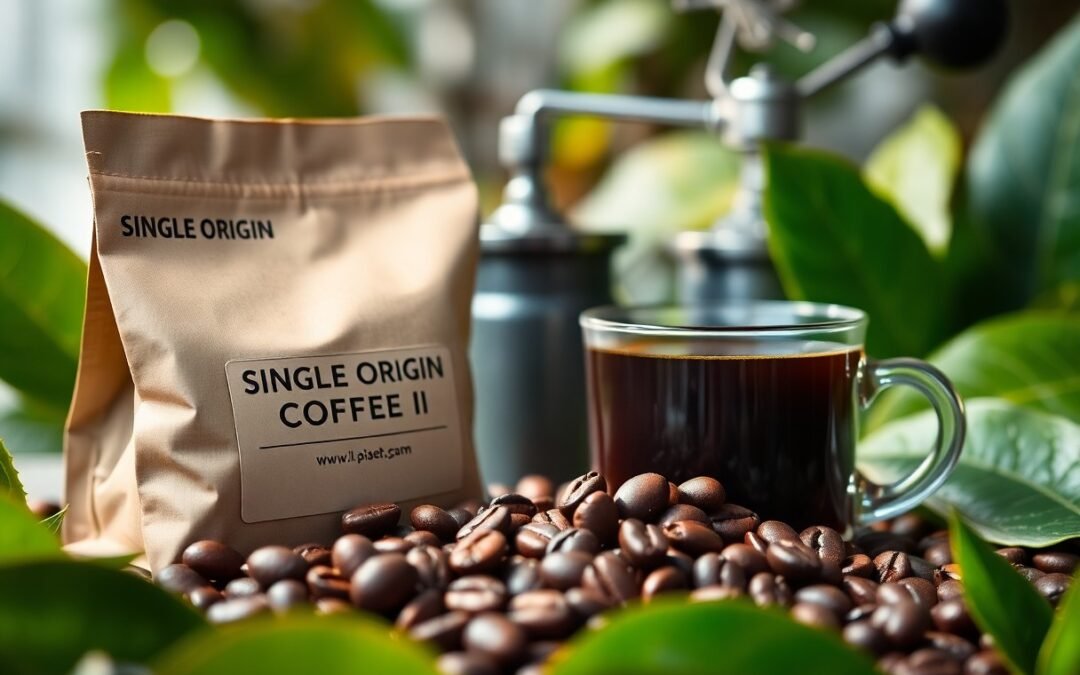Originating from a specific region, single origin coffee offers a unique tasting experience that reflects the characteristics of its locale. If you’re curious about the distinct flavors and stories behind your brew, it’s time to explore this captivating world. Understanding single origin coffees can enhance your appreciation for each cup, revealing the nuances influenced by factors such as climate and soil. For a comprehensive introduction, check out A Beginner’s Guide to Single-Origin Coffees and elevate your coffee experience.

The Unique Flavors of Single Origin Coffee
The wide range of flavors in single origin coffee is one of its most appealing features, as each cup tells a different story shaped by its environment and cultivation methods. From the bright acidity of Ethiopian Yirgacheffe to the chocolatey sweetness of Colombian beans, these coffees provide drinkers with an opportunity to experience distinct flavor profiles that reflect their source. Understanding the nuances behind these flavors enriches your coffee journey and encourages you to explore different regions and varieties.
Terroir and Its Impact on Flavor Profiles
Terroir, or the unique environmental conditions of a specific locale, significantly influences coffee flavor profiles. Factors such as altitude, climate, soil composition, and even local farming practices contribute to the overall taste. For instance, coffees grown at higher elevations often exhibit brighter acidity and more complex flavor notes, while those grown in lower altitudes may be smoother and richer. By appreciating terroir, you can gain a deeper understanding of why a specific coffee tastes the way it does.
The Role of Processing Methods
Processing methods play a pivotal role in shaping the final flavor of your cup of single origin coffee. The two primary methods—washed and natural—produce distinct taste profiles. Washed coffees, for example, emphasize clarity and bright acidity, stripping away the mucilage during processing, while natural coffees retain more of the fruit’s sweetness and body, as the beans are dried inside the cherry. Understanding how these methods affect flavor allows you to select coffees that best suit your taste preferences.
When exploring the impact of processing methods, consider the diverse techniques that farmers employ. For example, anaerobic fermentation, which has gained popularity in recent years, can lead to unique flavor expressions, often bringing out vibrant fruity and floral notes. In contrast, traditional sun-drying allows the beans to absorb the sugars from the coffee cherry, resulting in richer, more dessert-like profiles. By experimenting with coffees that utilize different processing methods, you can discover exciting flavor dimensions and deepen your appreciation for single origin coffee.
The Journey from Farm to Cup
The journey of single origin coffee from farm to cup is a fascinating process that emphasizes quality and authenticity. Various factors, including soil composition, altitude, and climate, influence the flavor profile of the beans. Farmers cultivate their coffee with care, employing specific harvesting techniques to ensure only the ripest cherries are selected. After harvesting, the beans undergo processing methods unique to their region, preserving their distinct characteristics before being roasted and brewed into the delicious cup you savor.
Traceability: Connecting Coffee Lovers to Producers
Traceability allows you to connect with the farmers who cultivate your coffee, enriching your enjoyment of each cup. By tracking the origins of your beans, you gain insights into the farming practices, climate conditions, and cultural traditions unique to that region. Many roasters provide detailed information about the farms they partner with, offering a sense of connection to the global coffee community and fostering appreciation for the hard work that goes into each batch.
The Importance of Seasonal Harvesting
Seasonal harvesting ensures that coffee cherries are picked at their peak ripeness, maximizing flavor potential. In many regions, coffee trees produce fruit at different times, which requires farmers to skillfully coordinate harvests. This practice not only elevates the taste and quality of the beans but also aligns with sustainable farming principles. When you select single origin coffees that are seasonally harvested, you partake in a taste experience reflective of nature’s rhythms, showcasing the distinct nuances of that specific harvest.
The significance of seasonal harvesting cannot be overstated. For instance, in Colombia, the diverse microclimates allow farmers to harvest coffee twice a year, each with its own unique profile. Harvesting at the right time requires intimate knowledge of the land and climate, and those carefully chosen beans yield complex flavors—floral notes in one season, chocolate undertones in another. Choosing single origin coffees that align with these harvest timings not only supports the livelihood of growers but also provides you with a richer, more vibrant tasting experience.
Supporting Sustainable Practices Through Your Brew
Choosing single origin coffee goes beyond flavor—it significantly impacts sustainability. By opting for single origin, you support farmers who often employ environmentally responsible agricultural practices. This mindful selection helps maintain biodiversity, preserve ecosystems, and foster community development, ensuring that your morning cup contributes positively to the planet and its inhabitants.
Environmental Benefits of Single Origin Farming
Single origin farming encourages sustainable practices like shade-grown coffee and organic cultivation, which protect soil health and promote biodiversity. These practices not only enhance the flavor profile of your brew but also mitigate harm to the environment, making your coffee choice a more eco-friendly option that supports climate resilience.
Fair Trade and Direct Sourcing: A Win-Win
Engaging in Fair Trade and direct sourcing fosters mutually beneficial relationships between you and the farmers. By opting for these practices, you ensure that farmers receive a fair price for their coffee, promoting better living conditions and community safeguards. Direct sourcing often results in fresher products, enhancing your coffee experience while contributing to ethical consumerism.
Fair Trade and direct sourcing embody the essence of ethical consumption. Many roasters who prioritize these channels work closely with coffee farmers, ensuring that they receive not only fair wages but also technical assistance to improve farming practices. You gain access to unique flavor experiences, while the farmers benefit from stable incomes and improved lives. For instance, direct trade relationships can often lead to higher quality beans, as producers maintain care over their product from cultivation to delivery. The end result is a partnership that enriches your cup while empowering communities worldwide.

How to Experience Single Origin Coffee Like a Connoisseur
Delving into single origin coffee opens up a world of distinct flavors and aromas that can turn your usual coffee routine into a sensory exploration. To truly appreciate the complexities and nuances, you must pay attention to the unique characteristics of each type of coffee. Start by selecting a variety that intrigues you—perhaps a bright Ethiopian Yirgacheffe or a rich Sumatra Mandheling—and commit to understanding its profile through a careful tasting journey.
Tasting Notes and Sensory Experience
Tasting single origin coffee is akin to savoring a fine wine, where each cup tells a story through its unique tasting notes. You’ll encounter diverse flavors like fruity berry notes, floral hints, or earthy undertones—all influenced by the coffee’s origin. As you sip, focus on the acidity, body, and finish, allowing yourself to explore how these elements come together to create an unforgettable taste experience.
Brewing Techniques that Highlight Unique Characteristics
Brewing methods play a pivotal role in extracting the best flavors from your single origin coffee. Different techniques can enhance specific attributes, whether you’re using a pour-over, French press, or espresso machine. For instance, a pour-over method can accentuate the clarity and brightness of a light roast, while a French press may bring out the full body and richer notes of a darker coffee.
To fully showcase the distinctive traits of your single origin coffee, experiment with brewing parameters such as water temperature, grind size, and steeping time. For lighter coffees, aim for a water temperature between 195°F and 205°F to preserve brightness, while darker roasts benefit from a higher water temperature to extract deeper flavors. A coarser grind works beautifully with the French press, while a fine grind is ideal for espresso. By fine-tuning these elements, you’ll unlock the full potential of each origin’s unique characteristics, resulting in a more rewarding tasting experience.
The Future of Single Origin Coffee in a Global Market
Industry Trends and Consumer Preferences
Growing awareness around ethical sourcing has transformed consumer preferences, with many coffee drinkers now favoring single origin options. The specialty coffee market has expanded, with studies showing that over 70% of consumers prioritize flavor diversity and origin in their coffee selections. This shift indicates a strong demand for transparency in sourcing, pushing roasters and producers to showcase their unique offerings and the stories behind them.
Innovations in Single Origin Sourcing
Emerging technologies are revolutionizing how single origin coffee is sourced, allowing for greater efficiency and transparency in the supply chain. For instance, blockchain technology is being utilized to trace coffee beans from farm to cup, ensuring authenticity and ethical practices. Apps that connect consumers directly with farmers have also emerged, fostering relationships and enabling engagement with the very origins of your coffee. These innovations not only support the livelihoods of growers but also empower consumers with the knowledge they seek about their brews.
Summing up
The exploration of single origin coffee opens a world of unique flavors and diverse profiles that can enrich your coffee experience. By trying single origin varieties, you gain insight into the specific farming practices, regional influences, and tasting notes that define each cup. This journey cultivates your appreciation for coffee, allowing you to savor the distinct characteristics that different origins offer. Embrace the adventure and enhance your palate by entering into the world of single origin coffee; you won’t be disappointed by what you discover.
FAQ
Q: What is single origin coffee and how does it differ from other types of coffee?
A: Single origin coffee refers to coffee that is sourced from a specific region, country, or even a single farm. This means that the beans are traced back to a particular location, allowing for unique flavor profiles that are characteristic of that specific area. Unlike blended coffees, which combine beans from various origins, single origin coffee showcases the distinct qualities and attributes of one particular locale, such as its soil, climate, and cultivation methods.
Q: Why should I try single origin coffee?
A: Trying single origin coffee offers a unique opportunity to explore the diverse flavors and aromas that different growing regions contribute to the beans. Each single origin has its own taste profile influenced by factors like altitude, rainfall, and processing methods. By sampling various single origin coffees, you can enhance your palate and discover new flavors that can’t be found in standard blends. Additionally, supporting single origin coffees often means supporting small-scale farmers and fair trade practices, making your coffee choice more ethical.
Q: How can I identify high-quality single origin coffee?
A: To identify high-quality single origin coffee, look for specific details on the packaging, such as the origin name, roast date, and tasting notes. Specialty coffee roasters often emphasize transparency about their sourcing and may provide information on the farm or cooperative. Beans that are freshly roasted, often labeled as “third wave” coffee, typically highlight the characteristics of the origin. Attending coffee tastings or workshops can also help you understand how to distinguish quality by experiencing various single origins side by side.

